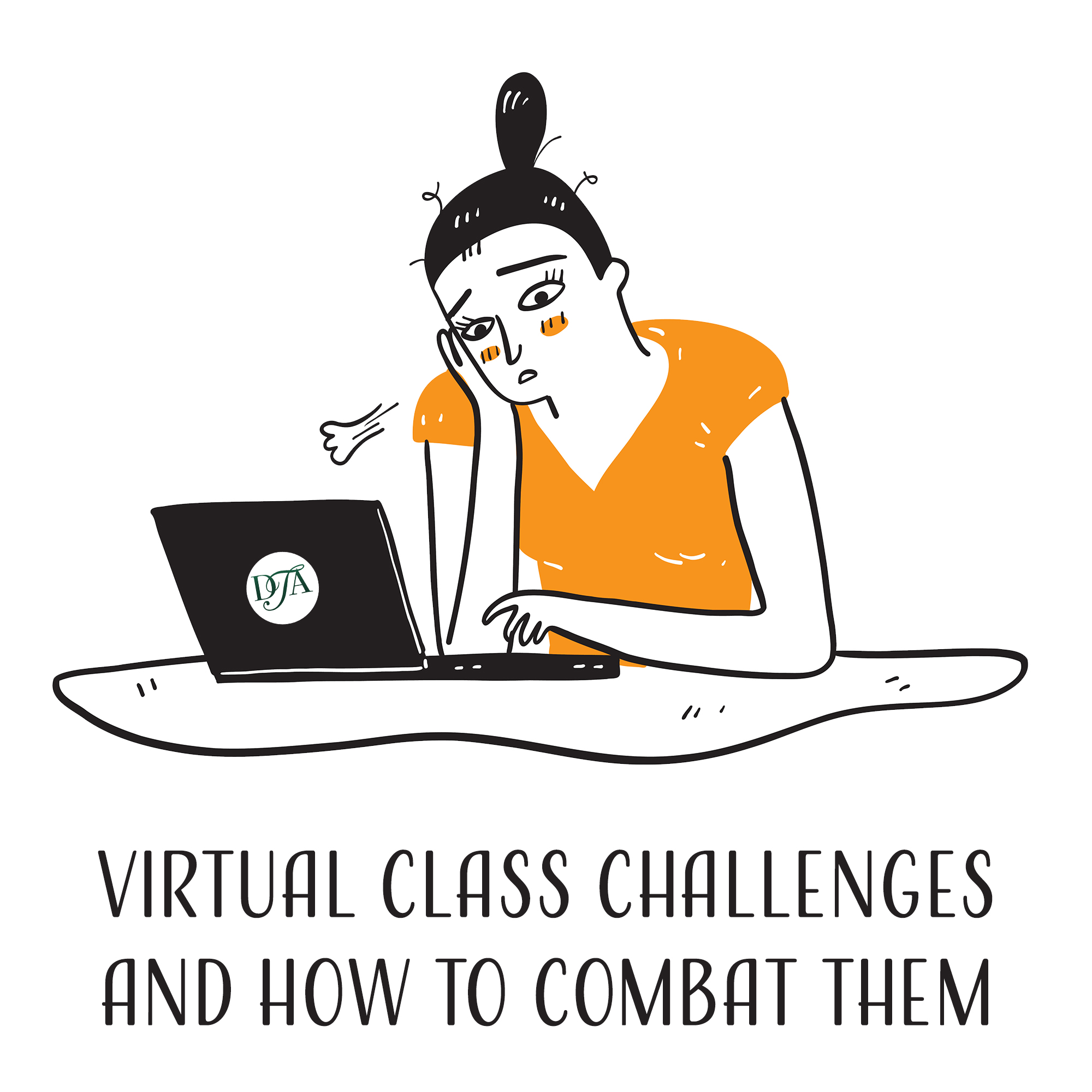Work was intense. The roommates are loud. You’ve gotta find a corner with a bare background and log in to YET ANOTHER Zoom.
It’s a reality for a lot of people nowadays. While online classes have seen major growth in the last few years and have offered options to people who formerly couldn’t access these classes, the reality is virtual classes are also very challenging for a lot of people.
We were curious about the barriers that exist for virtual classes, so we asked our followers to tell us what is stopping them from signing up for an online class.
“… the biggest thing for me … is the Zoom fatigue. I am constantly on Zoom for my day job, so when I get time to myself, I tend to be quite conscious of how much extra time I spend on Zoom.”
Many of us have been there, especially with a lot of jobs, colleges, and clubs moving online. The Harvard Business Review noted that it is common for people to feel fatigued after video calls because they are required to focus more intently in order to get all of the same information they would get in person. It takes more labor to ask clarifying questions, recognize if you’re the only one confused, and even share a joke with someone else. When attending a virtual class, see if you can change your setting – can you take your laptop into the living room or bedroom so that you can sit in a different chair, or have more room to move around? Just changing location can shake up your brain and its correlation to the original workspace being somewhere long, boring meetings happen. Ask your instructor if you can turn off your camera so that you aren’t worried about what other folks may think of your space, or if you need to get up or move around to help give your body the breaks it needs. Setting your screen to “speaker view” can help get rid of the distractions created by other folks in class moving around, and will allow you to focus on what the instructor has to say, and the movements they make.
“I have hearing problems that make using online [platforms] difficult. The sound quality varies a great deal on different devices and people mumble.”
There are many different factors that feed into the quality of sound in a virtual classroom. Maybe someone’s dog keeps breathing into the mic or the instructor speaks at the same pitch as the mechanical sound of your speakers. Either way, it’s hard to learn when you’re not able to hear, process, and understand what is happening. One way to overcome this barrier is to ask about closed captioning options as more and more platforms are offering captioning services. Captions can assist those who are not only Deaf or Hard of Hearing, but those who have cognitive, learning, or other disabilities as well. Although real-time captioning isn’t always accurate, it can help fill in some blanks. If you are having a hard time understanding something, there is a likelihood that others in the class are as well – you can always ask for an instructor to repeat something, or you could ask other students in the chat to help. Another solution is participating in classes that have recording options. It allows parts to be replayed in case you miss bits and pieces. You can always ask other participants to mute their mics if they are not actively speaking, and wear noise-canceling headphones to cut down on background noise.
“The classes I’ve seen tend to be in the middle of the day on weekends, and I have work and/or commitments during the day on weekends.”
You may have a job that you work on the weekends. You may use your weekends for sleep or meal prep or just existing. Scheduling virtual classes can be hard, even if you don’t have to travel. If scheduling seems to be your biggest barrier, consider courses that are “work at your own pace” and allow you to access the information when you’re prepared, or ask instructors if they’d be willing to record their classes for you to watch when it’s most convenient. If there are classes you’d really prefer to take live, ask the instructor if they’d consider changing the time for their next session of the class. There is a likelihood that there are other students who could use a different time option as well.

Other barriers noted included:
- Video chat rooms are too “in your face”
- Focus challenges – you can text a friend, check your email, post to Facebook, or have to stop a pet from ruining your boa all at the same time
- Inconsistent energy levels
- Learning group choreo online is challenging
- Cost
- Instructor’s online teaching competency
- If a class previously taught in person will translate well to a virtual setting
- Not having “community” around you
Even with all of these barriers, many are finding classes more accessible than in-person classes. What works for you, may not work for your friend, and what works for you now may not work as effectively six months from now. Whether you’re taking virtual or in-person classes, below are some tips to help you meet your needs.
- Join with a buddy. It gives you another person to check in with while still giving you the opportunity to access the information. This can help with accountability, and having someone you know in class can help with confidence and they can assist if you are having trouble understanding a concept. If you and your buddy will be in the same physical space during class, check with your instructor or the organization providing the class regarding the best way to register two people who would be sharing one camera.
- Create a plan. Identify what barriers you are expecting and create a plan to help yourself. If you feel comfortable reaching out to the instructor before the course, many instructors will support an accessibility plan in an effort to help you gain the knowledge.
- Know your schedule (or lack thereof). Even if you’re free at 6 pm on Wednesdays, you may also recognize that your energy is lowest on Wednesdays so a virtual class may not be best. Alternatively, you may recognize that your energy levels are unpredictable, and signing up for single-session classes or ones that could be viewed later may be best for you.
- Look into financial options. Some courses can be paid for via a payment plan, others may have applicable scholarships. If the financial requirements are a barrier, reach out to the organization hosting the classes and see what options they offer for assistance.
- Have fun! No matter how you do it or where you go, learning has been proven more effective when it is also entertaining. Pick classes you are excited about and have a good time.

Suggested articles:
Zoom Fatigue (Wikipedia)
How to combat Zoom fatigue (Harvard Business Review)
7 Tips for Combatting Zoom Fatigue [PDF] (Skidmore College)
Why Remote Work Can Be Hard For Hard-Of-Hearing People (Forbes)
Stay tuned for next month’s post, where we share our community’s answers to our question “March is Disability Awareness Month. What is one thing you wish people were more aware of?”.
Read last month’s post which answers “What is the best virtual class you’ve ever taken?”
If you have had challenges or barriers to taking classes with the DisabiliTease Academy, we’d love to hear from you so that we can help provide support and possible solutions. Feel free to email us any time.

